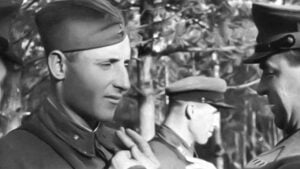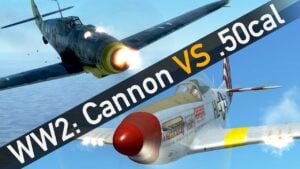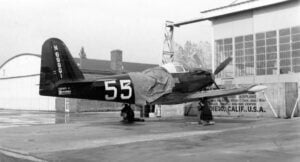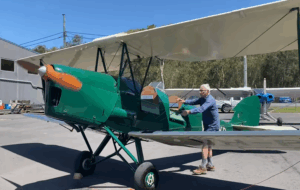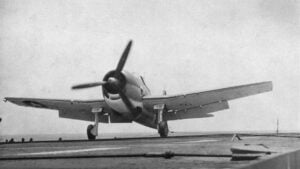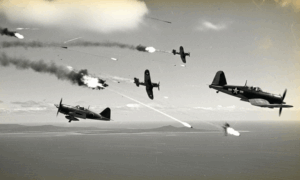Why did Spitfires change their guns? Ft. Jonathan Ferguson
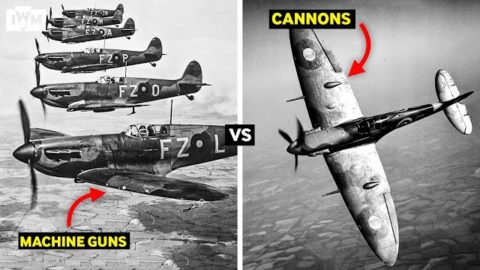
YouTube / Imperial War Museums
Examples like the Spitfire Mk 1, alongside the Hurricane, fought the Luftwaffe during the summer of 1940 to keep Britain in the war. Spitfires were initially equipped with eight machine guns. They fired a 303 rifle-caliber machine gun round. Throughout its development, the Spitfire not only gained larger engines but also increased armament, such as the 20 mm cannon and the large 0.5-inch machine gun.
It’s Complicated
The story of the Spitfire’s armament development is complicated and can even be considered controversial up to this day. By the time the Spitfire came into service, it was equipped with eight 303 machine guns, four in each wing. However, with increasing speeds and altitudes, these aircraft can encounter some problems. One problem is that the guns themselves freeze as the aircraft fly at these heights. To combat this, hot air is pumped from the engine through the gun bays to keep them warm, and also patches are fixed to the front of the gun apertures to stop moisture and dirt from getting inside.
Also, since British fighters were equipped with eight machine guns, they had a higher rate of fire, firing more bullets at the enemy in a certain period. However, the Germans’ differing range of weapons meant they had a higher weight of fire. Meaning they could put down an increased volume of ordinance over their British counterparts. Thus, it’s clear that it’s all about balance.
A New Weapon
At this point, the British needed a weapon with more hitting power to bring down enemy aircraft. Thus, they started experimenting with a new weapon- the 20 mm Hispano cannon. These are markedly larger, bigger and heavier. They also contain a large armor-piercing penetrator. The gun itself is gigantic, with a rate of fire of about 800 rounds per minute. The 19 Squadron was the first ever Spitfire squadron equipped with cannons.
When these new weapons were fitted to the Spitfire, they increased the punch the aircraft could deliver. Unfortunately, they rarely ever did work. The G forces on the aircraft and the stresses in the wing caused the ammunition feeds to fail, and the guns regularly jammed. The 19 Squadron eventually became fed up and requested their old Spitfires back.
Later Developments
From Mk 5 onwards, the Spitfire was fitted with a variety of different wings- the A, the B, and the C wing. The C-wing was the universal wing capable of carrying a variety of weapons depending on its role, either a pair of 303s or a pair of 20 mm cannons in each wing, or a combination thereof. The C wing was incredibly important to Britain’s war effort since it sped up manufacturing and was far more efficient in production. Most C-wings in service were equipped with two 303 machine guns and one 20 mm cannon.
From the Mk 9 onwards, the designation of A and B was dropped in favor of the C, D, and E wings. The E-wing, for instance, can carry a 20 mm cannon and a 0.5-inch heavy machine gun round. According to Jonathan Ferguson of the Royal Armories, it was a very potent aircraft gun used in virtually all US fighters and Spitfires with its new E-wing in 1944. The aircraft gets to mount two of these, along with the Hispano cannon, giving it a bit of a punch. It’s 800 rounds per minute and 260 rounds per gun.














